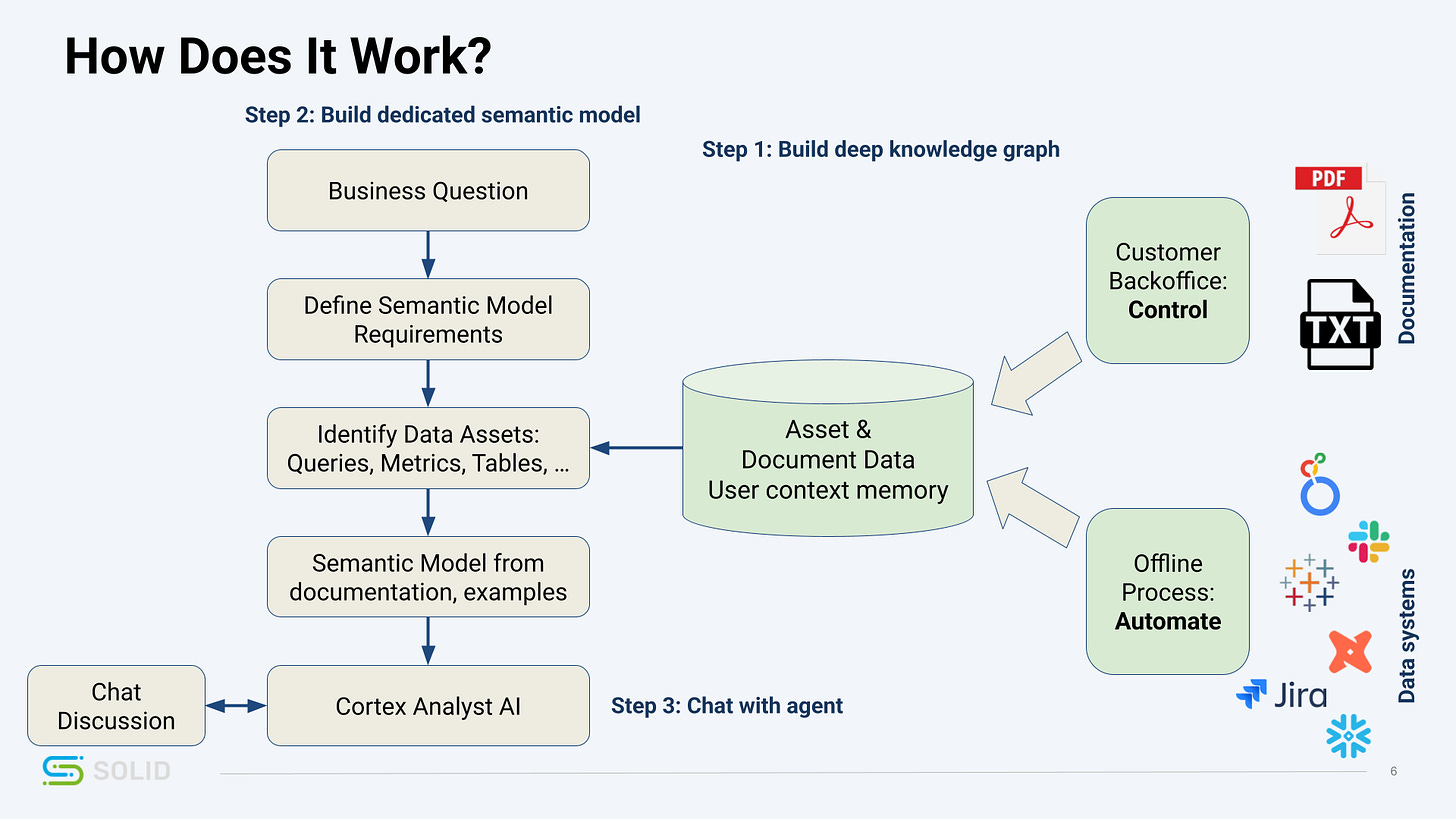Data, Meet Business: Why You Need JIT Semantic Models, Instead of a Static Semantic Layer
Tal Segalov, CTO & Co-Founder at Solid, shares a unique invention which will drastically expand the value of semantic layers.
In his previous blog posts, my co-founder, Yoni, discussed the need to auto-generate semantic layers for “AI for BI”, the value of keeping your BI investment as a basis for such a semantic layer, and even Solid’s offering for a free documentation and semantic modelling of your data.
Today, I’d like to dig deeper into one concept that Solid is pioneering within the Semantic Modelling world: Just-In-Time Semantic Models (JIT-SM).
Semantic models are the ultimate translator, a bridge connecting the technical world of databases and tables to the practical world of business needs. Its job is to map complex data structures to familiar business terms like "customer," "revenue," and "quarterly growth," the right data is used to make decisions (while taking into account the different perspectives on the business that different teams have). For any data-driven organization, it’s becoming the trusted source of truth that guides AI to the correct and up-to-date information to serve business users.
But here’s the catch: building and maintaining this bridge is often a monumental, manual task (and should not be done manually). It’s a static blueprint in a world that’s constantly changing. The process is slow, expensive, and requires a dedicated team of experts to meticulously define every relationship. The result? These valuable semantic models are hard to keep current, and render the AI data chatbots built on top of them useless to the business users. We spend countless resources building a comprehensive map, yet most of it gathers dust, unused but still costly to maintain.
What if we could build the perfect semantic model, just for the question you have, right when you ask it? This is the promise of the Just-In-Time Semantic Layer (JIT-SM), an agile and intelligent approach powered by AI. Instead of building a monolithic semantic model, the JIT-SM process starts by using AI to create deep, automated documentation of all your data assets—dashboards, database tables, views, metrics, and even the queries people run every day. By observing how objects are used and how they relate to business terms, it learns the organic patterns of your data stack. Crucially, it also applies quality filters, automatically identifying the most trusted and relevant assets based on their recency, usage frequency, and source.
Now, when a business user asks a question, the magic happens. The system scans its vast, AI-generated knowledge base to find the most relevant tables, columns, join paths, and even sample queries related to that specific question. From these handpicked, high-quality ingredients, it instantly constructs a custom-fit semantic model tailored to the task at hand. This dynamic model then empowers an AI agent to generate a precise, context-aware answer.
The model is created just in time for a given user need, hence the name.
The benefits of this approach are transformative:
Automation: It eliminates the need for expensive, manual projects, allowing you to get started in a fraction of the time.
No Waste: Why build and maintain what you don't use? The JIT-SM approach ensures you only invest effort in what’s actively needed.
Lower TCO: By generating models on the fly from real usage patterns, the staggering cost of maintaining a static semantic layer is virtually eliminated.
Business User Empowerment: It simplifies the complex world of data, finally making it possible to give business users direct, intuitive access to the answers they need.
As part of this, we’re excited to announce our Just In Time Semantic Model capability for Snowflake. Using JIT-SM, Solid users can generate SQL queries on the fly within Snowflake, through Snowflake Cortex Analyst. The Solid platform generates the semantic model on demand for each query, and then uses it when making a Text2SQL call to Cortex Analyst.
Below, is a short video I recently recorded showing how this works. In this example, SunSpectra is a sunglass retailer (demo environment we’ve made up). They use Snowflake and PowerBI, and Solid has auto-documented the entire environment based on the assets, query logs, and other hints. In this video, I demo the JIT-SM capability:
It’s time to move from static blueprints to dynamic conversations. Solid’s Just-In-Time Semantic Layer makes data more accessible, affordable, and aligned with the speed of your business.


